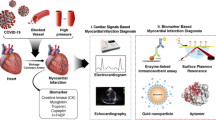Abstract
The coronary artery disease (CAD) is a chronic inflammatory disease caused by atherosclerosis, in which arteries become clogged due to plaque formation, fat accumulation, and various sorts of immune cells. IL-32 is a proinflammatory cytokine, which enhances inflammation through inducing the secretion of different inflammatory cytokines. The main objective of the current study was to assess the serum levels of IL-32 in subjects with obstructive CAD and its relationship with the serum levels of IL-6 and TNF-α. This study was performed on 42 subjects with obstructive CAD and 42 subjects with non-obstructive CAD. The serum levels of TNF-α, IL-6, and IL-32 were measured using the enzyme-linked immunosorbent assay (ELISA). The serum levels of TNF-α, IL-6, and IL-32 were 3.2, 3.48, and 2.7 times higher in obstructive CAD compared to non-obstructive CAD, respectively. Moreover, the serum levels of TNF-α and IL-32 in obstructive CAD with cardiac arterial stenosis in one major vessel were significantly higher than the levels in obstructive CAD with cardiac arterial stenosis in more than one major vessel. ROC curve analysis revealed that the serum levels of TNF-α, IL-6, and IL-32 were good predictors of obstructive CAD. Moreover, multiple logistic regression analyses suggested that the serum levels of TNF-α, IL-6, IL-32, LDL, and ox-LDL were independently related to the presence of obstructive CAD, while serum levels of HDL were not. TNF-α, IL-32, and IL-6 showed an increase in obstructive CAD, and the serum levels of these cytokines showed a satisfactory ability for predicting obstructive CAD.




Similar content being viewed by others
References
Mortality GBD and Causes of Death C (2015) Global, regional, and national age-sex specific all-cause and cause-specific mortality for 240 causes of death, 1990–2013: a systematic analysis for the Global Burden of Disease Study 2013. Lancet 385:117–171
Lusis AJ (2000) Atherosclerosis. Nature 407:233–241
Mohmmad-Rezaei M, Arefnezhad R, Ahmadi R et al (2021) An overview of the innate and adaptive immune system in atherosclerosis. IUBMB Life 73:64–91
Ouimet M, Barrett TJ, Fisher EA (2019) HDL and reverse cholesterol transport: basic mechanisms and their roles in vascular health and disease. Circ Res 124:1505–1518
Rafiei A, Ferns GA, Ahmadi R et al (2021) Expression levels of miR-27a, miR-329, ABCA1, and ABCG1 genes in peripheral blood mononuclear cells and their correlation with serum levels of oxidative stress and hs-CRP in the patients with coronary artery disease. IUBMB Life 73:223–237
Jaitin DA, Adlung L, Thaiss CA et al (2019) Lipid-associated macrophages control metabolic homeostasis in a Trem2-dependent manner. Cell 178:686–698
Libby P, Lichtman AH, Hansson GK (2013) Immune effector mechanisms implicated in atherosclerosis: from mice to humans. Immunity 38:1092–1104
Kim SH, Han SY, Azam T, Yoon DY, Dinarello CA (2005) Interleukin-32: a cytokine and inducer of TNFalpha. Immunity 22:131–142
Netea MG, Azam T, Ferwerda G et al (2005) IL-32 synergizes with nucleotide oligomerization domain (NOD) 1 and NOD2 ligands for IL-1beta and IL-6 production through a caspase 1-dependent mechanism. Proc Natl Acad Sci USA 102:16309–16314
Fadaei R, Bagheri N, Heidarian E et al (2020) Serum levels of IL-32 in patients with type 2 diabetes mellitus and its relationship with TNF-alpha and IL-6. Cytokine 125:154832
Joosten LA, Netea MG, Kim SH et al (2006) IL-32, a proinflammatory cytokine in rheumatoid arthritis. Proc Natl Acad Sci USA 103:3298–3303
Shioya M, Nishida A, Yagi Y et al (2007) Epithelial overexpression of interleukin-32alpha in inflammatory bowel disease. Clin Exp Immunol 149:480–486
Gensini GG (1983) A more meaningful scoring system for determining the severity of coronary heart disease. Am J Cardiol 51:606
McLaren JE, Michael DR, Ashlin TG, Ramji DP (2011) Cytokines, macrophage lipid metabolism and foam cells: implications for cardiovascular disease therapy. Prog Lipid Res 50:331–347
Tousoulis D, Oikonomou E, Economou EK, Crea F, Kaski JC (2016) Inflammatory cytokines in atherosclerosis: current therapeutic approaches. Eur Heart J 37:1723–1732
Yang Z, Shi L, Xue Y et al (2019) Interleukin-32 increases in coronary arteries and plasma from patients with coronary artery disease. Clin Chim Acta 497:104–109
Gotsman I, Stabholz A, Planer D et al (2008) Serum cytokine tumor necrosis factor-alpha and interleukin-6 associated with the severity of coronary artery disease: indicators of an active inflammatory burden? Isr Med Assoc J 10:494
Akita K, Isoda K, Sato-Okabayashi Y et al (2017) An interleukin-6 receptor antibody suppresses atherosclerosis in atherogenic mice. Front Cardiovasc Med 4:84
Babaee M, Chamani E, Ahmadi R et al (2020) The expression levels of miRNAs-27a and 23a in the peripheral blood mononuclear cells (PBMCs) and their correlation with FOXO1 and some inflammatory and anti-inflammatory cytokines in the patients with coronary artery disease (CAD). Life Sci 256:117898
Damen M, Popa CD, Netea MG, Dinarello CA, Joosten LAB (2017) Interleukin-32 in chronic inflammatory conditions is associated with a higher risk of cardiovascular diseases. Atherosclerosis 264:83–91
Heinhuis B, Popa CD, van Tits BL et al (2013) Towards a role of interleukin-32 in atherosclerosis. Cytokine 64:433–440
Damen MS, dos Santos JC, Hermsen R et al (2018) Interleukin-32 upregulates the expression of ABCA1 and ABCG1 resulting in reduced intracellular lipid concentrations in primary human hepatocytes. Atherosclerosis 271:193–202
Lei L, Xiong Y, Chen J et al (2009) TNF-alpha stimulates the ACAT1 expression in differentiating monocytes to promote the CE-laden cell formation. J Lipid Res 50:1057–1067
Acknowledgements
Shahrekord University of Medical Sciences financially supported this study with grant number 3118.
Author information
Authors and Affiliations
Corresponding author
Ethics declarations
Conflict of interest
All authors approved this manuscript. No competing interests declared.
Ethical approval
This study was approved by the ethical board of Shahrekord University of medical sciences with Number: IR.SKUMS.REC.1398.199.
Additional information
Publisher's Note
Springer Nature remains neutral with regard to jurisdictional claims in published maps and institutional affiliations.
Rights and permissions
About this article
Cite this article
Mohammad-Rezaei, M., Ahmadi, R., Rafiei, A. et al. Serum levels of IL-32 in patients with coronary artery disease and its relationship with the serum levels of IL-6 and TNF-α. Mol Biol Rep 48, 4263–4271 (2021). https://doi.org/10.1007/s11033-021-06441-7
Received:
Accepted:
Published:
Issue Date:
DOI: https://doi.org/10.1007/s11033-021-06441-7




